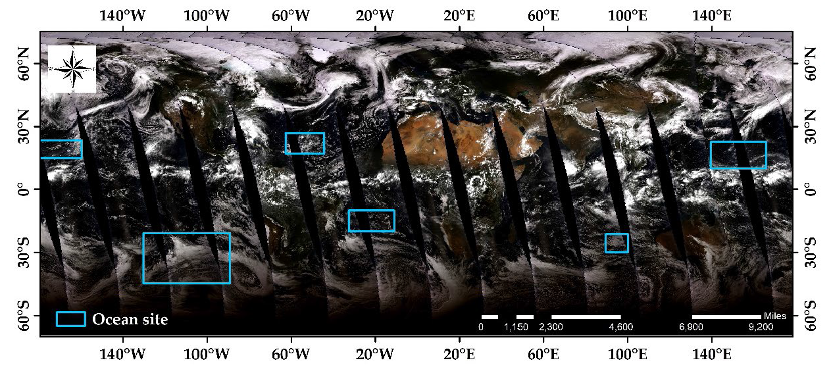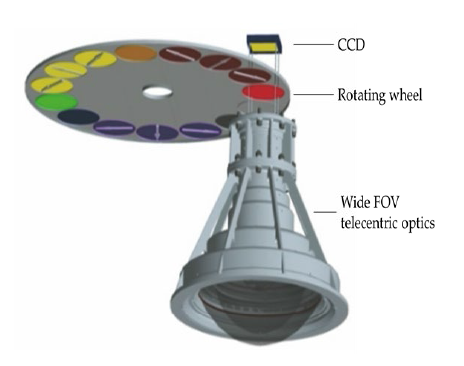Chinese Satellite In-flight Calibration Research Approved by World Meteorological Organization
Recently, the World Meteorological Organization (WMO) reported in its GSICS Quarterly Newsletter (Volume 16, No. 2, 2022) the research of the in-flight radiometric calibration of Chinese wide field of view (FOV) Directional Polarimetric Camera (DPC) on-board GF5 and GF5-02 series satellites based on Rayleigh scattering method, which was carried out by a research team led by Prof. LI Zhengqiang from the National Engineering Laboratory for Satellite Remote Sensing Applications under the Aerospace Information Research Institute (AIR), Chinese Academy of Sciences (CAS).
Precise in-flight radiometric calibration is one of the major premises for the high-quality observation data and applications of optical remote sensing instruments. Since 2018, China has successfully launched a series of DPC satellite sensors. DPC series has become the most important space-borne sensors in the world at the present stage, which provide multi-spectral, multi-angular polarimetric measurements of the global earth-atmosphere system and then provide important observation data for global atmospheric aerosol and cloud detection, support climate change and environmental monitoring research. Because of its wide FOV, DPC is not equipped with an onboard radiometric calibration system, but its polarization detection is extremely sensitive to radiometric accuracy, so the in-flight radiometric calibration and performance monitoring of DPC become extremely urgent and important.
The AIR team proposed to use the high-precision atmospheric Rayleigh scattering calculation over the clean ocean area, far away from human activities, as the reference source to calibrate the in-flight absolute radiometric and relative radiometric response of the wide-field DPC.
Based on the characteristics of wide FOV and multi-angular observation of DPC, the AIR team proposed a new approach to calibrate the DPC radiometric response over its whole FOV with high precision, and the approach was successfully applied to DPC抯 long-term radiometric performance monitoring. A radiometric drift correction scheme over the full FOV of DPC was formed and the inversion accuracy of aerosol optical thickness and other products was effectively improved.
The developed vicarious calibration method is efficient for the radiometric sensitivity calibration and long-term monitoring of wide FOV satellite sensors, providing key support for improving the quantitative applications of satellite remote sensing data.
Global Space-based Inter-Calibration System (GSICS) is an international collaborative effort initiated in 2005 by the World Meteorological Organization (WMO) and the Coordination Group for Meteorological Satellites (CGMS) to 1-monitor, 2-improve and 3-harmonize the quality of observations from operational weather and environmental satellites of the Global Observing System (GOS). GSICS aims at ensuring consistent accuracy among space-based observations worldwide for climate monitoring, weather forecasting, and environmental applications. Each GSICS Quarterly Newsletter publishes 4 ~ 5 international representative achievements in the field of satellite radiometric calibration.
This work was supported by the National Natural Science Foundation of China and the finance science and technology project of Hainan province.

The major oceanic sites for the statistical calibration method using Rayleigh scattering.

The wide field of view DPC optics.



News & Events